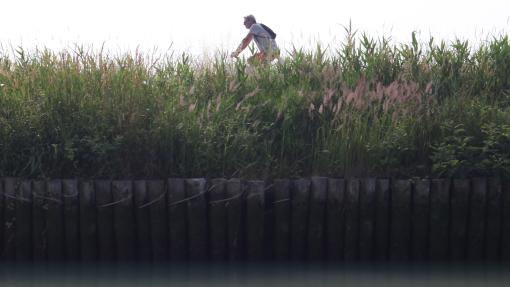Eastern Venice, with its rich landscape and culture, offers an ideal context for the development of cycle tourism, a form of sustainable tourism that is gaining increasing appreciation both nationally and internationally. The course of the river Lemene, in particular, represents one of the most evocative cycle routes in the area, offering cyclists the opportunity to explore an area rich in history, nature and food and wine traditEastern Venice, with its rich landscape and culture, offers an ideal context for the development of cycle tourism, a form of sustainable tourism that is gaining increasing appreciation both nationally and internationally. The course of the river Lemene, in particular, represents one of the most evocative cycle routes in the area, offering cyclists the opportunity to explore an area rich in history, nature and food and wine traditions.
The route along the Lemene river winds through enchanting landscapes, characterised by fertile countryside, small villages rich in history and protected natural areas. These include the picturesque fishing village of Caorle, the ancient Roman city of Concordia Sagittaria and Portogruaro, with its palaces and porticoes that bear witness to the period of maximum splendour of the Serenissima Republic of Venice. And then the lagoon made famous by Ernest Hemingway. This cycle route attracts not only cycling enthusiasts but also those seeking direct contact with nature and local culture, offering a slow tourist experience that allows you to fully appreciate the special features of the area.
The development of cycle tourism in the Eastern Veneto region, and along the Lemene river in particular, plays a significant role in enhancing the area. By focusing on this type of tourism, the region highlights its natural beauty and hidden treasures, promoting local economic development in a sustainable manner. Enhancement initiatives include the creation of dedicated infrastructures, such as safe cycle paths, equipped rest areas and bicycle rental services, which make the experience of the cyclist more accessible and enjoyable. Precisely in Concordia Sagittaria, between Caorle and Portogruaro, a wharf will be built - thanks to the Interbike III project - that will allow for the docking of boats capable of allowing the development of a slow tourism, with low environmental impact, that combines boats and bicycles transport for the discovery of the territory.
Cycle tourism contributes significantly to the sustainable development of the areas it passes through. Unlike mass tourism, it favours an approach that respects the environment and local communities, while stimulating the economy through the consumption of local products and services. Local businesses, from accommodation facilities to food and wine producers, benefit from this new form of tourism, which encourages a model of consumption that is responsible and close to the local reality.
The promotion of this form of tourism therefore represents a valuable opportunity for the territory, capable of enhancing its unique resources in the name of sustainable development and innovation.

